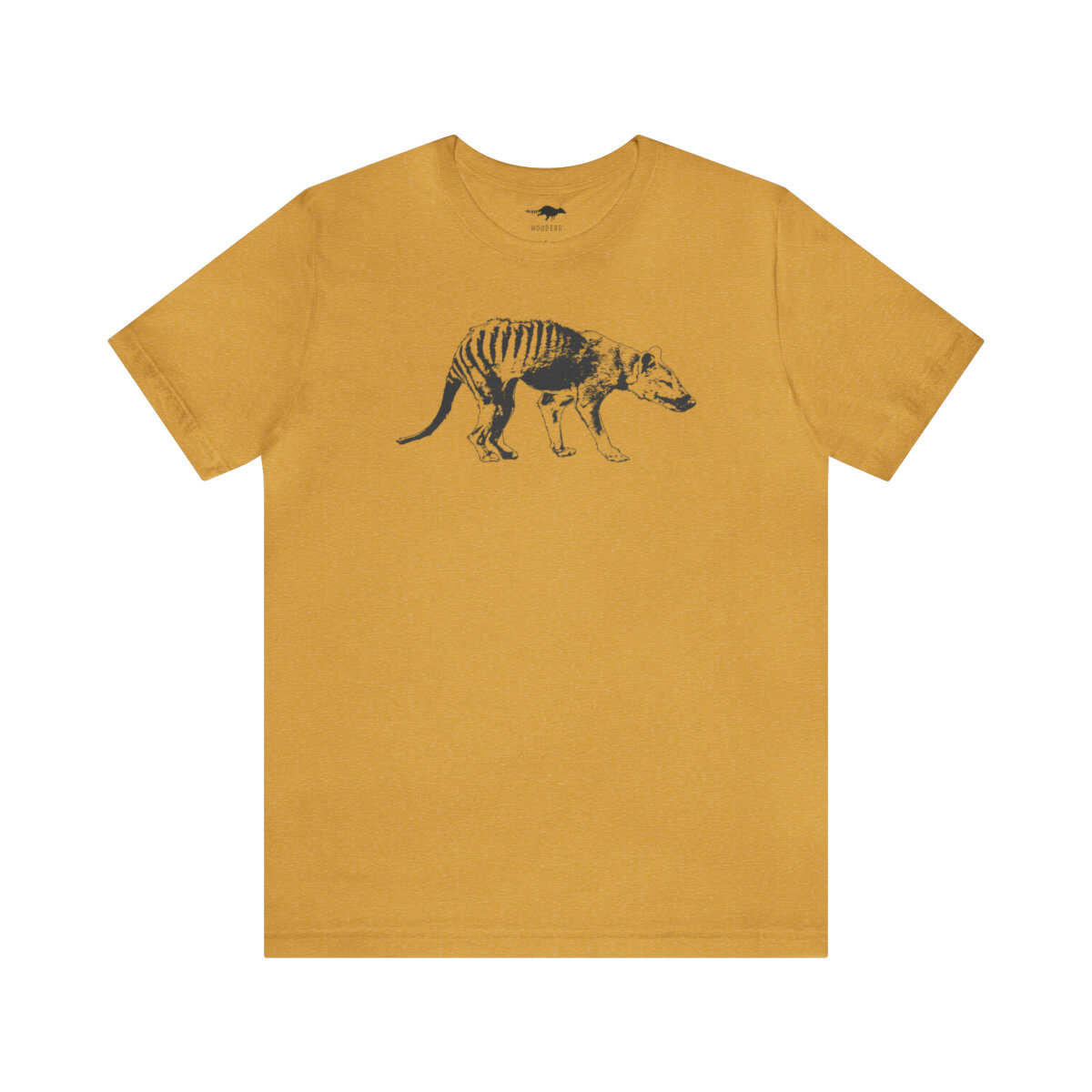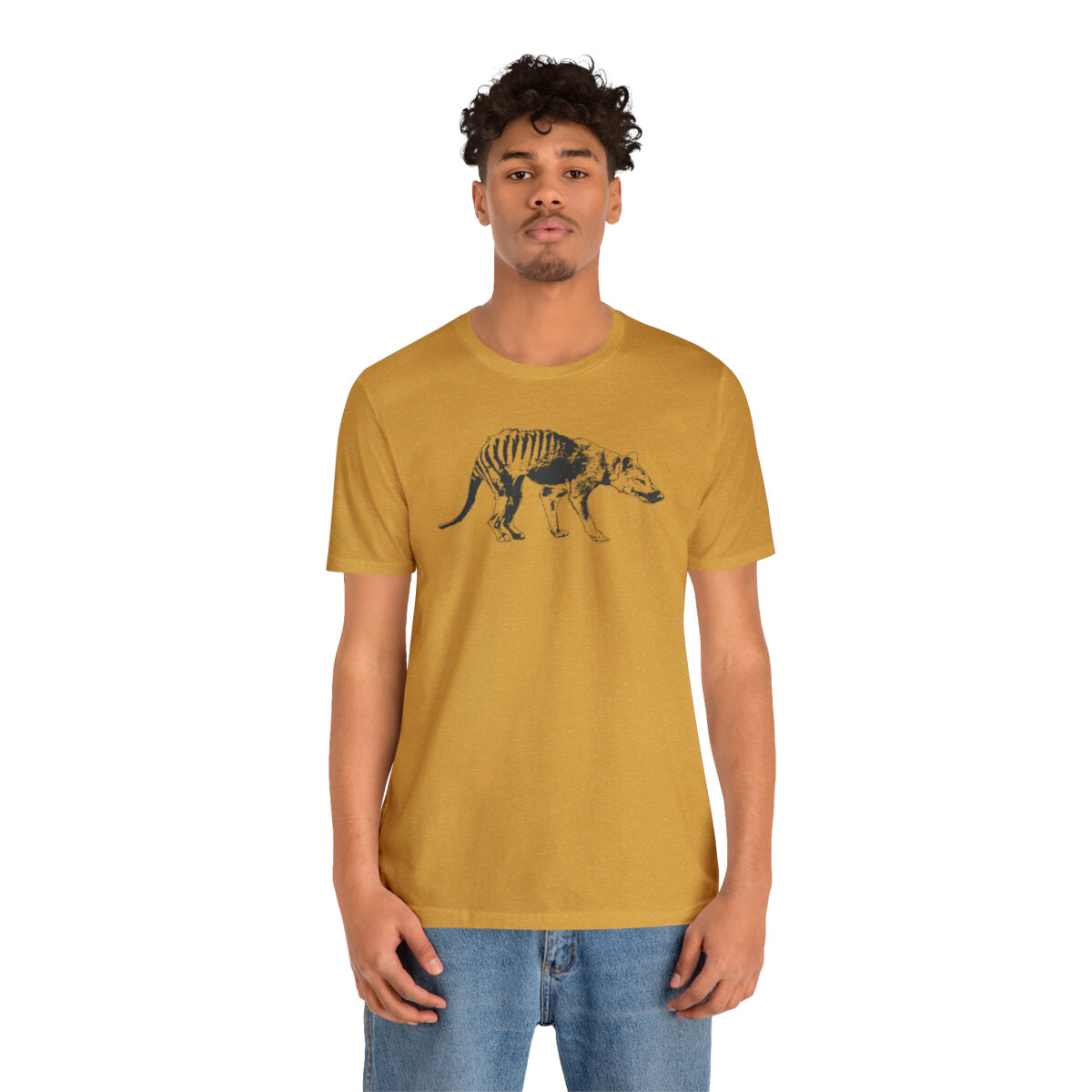 Image 1 of 8
Image 1 of 8

 Image 2 of 8
Image 2 of 8

 Image 3 of 8
Image 3 of 8

 Image 4 of 8
Image 4 of 8

 Image 5 of 8
Image 5 of 8

 Image 6 of 8
Image 6 of 8

 Image 7 of 8
Image 7 of 8

 Image 8 of 8
Image 8 of 8









Tasmanian Tiger
The last known Tasmanian Tiger.
This unique carnivorous marsupial was native to Tasmania, Australia, and New Guinea. Its extinction was largely attributed to factors such as habitat loss, hunting, and disease introduced by European settlers. The thylacine's distinctive appearance, with its elongated body, sandy coat, and a series of dark stripes across its back, made it an iconic and enigmatic creature. Despite ongoing efforts to prove its survival, no conclusive evidence has emerged, and the Tasmanian tiger remains a symbol of the urgent need for conservation and the consequences of human impact on wildlife.
100% Airlume combed and ringspun cotton (fiber content may vary for different colors)
Light fabric (4.2 oz/yd² (142 g/m²))
The last known Tasmanian Tiger.
This unique carnivorous marsupial was native to Tasmania, Australia, and New Guinea. Its extinction was largely attributed to factors such as habitat loss, hunting, and disease introduced by European settlers. The thylacine's distinctive appearance, with its elongated body, sandy coat, and a series of dark stripes across its back, made it an iconic and enigmatic creature. Despite ongoing efforts to prove its survival, no conclusive evidence has emerged, and the Tasmanian tiger remains a symbol of the urgent need for conservation and the consequences of human impact on wildlife.
100% Airlume combed and ringspun cotton (fiber content may vary for different colors)
Light fabric (4.2 oz/yd² (142 g/m²))
The last known Tasmanian Tiger.
This unique carnivorous marsupial was native to Tasmania, Australia, and New Guinea. Its extinction was largely attributed to factors such as habitat loss, hunting, and disease introduced by European settlers. The thylacine's distinctive appearance, with its elongated body, sandy coat, and a series of dark stripes across its back, made it an iconic and enigmatic creature. Despite ongoing efforts to prove its survival, no conclusive evidence has emerged, and the Tasmanian tiger remains a symbol of the urgent need for conservation and the consequences of human impact on wildlife.
100% Airlume combed and ringspun cotton (fiber content may vary for different colors)
Light fabric (4.2 oz/yd² (142 g/m²))
